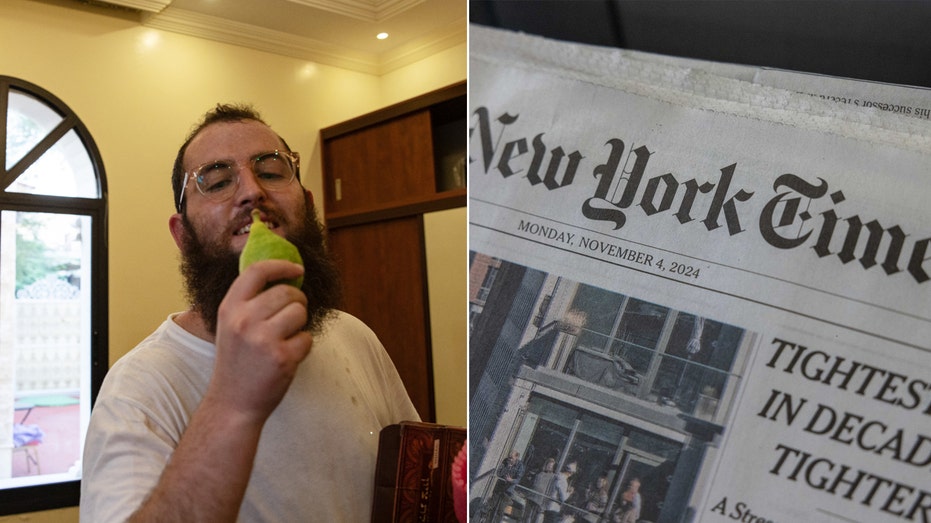The New York Times recently found itself at the center of controversy after modifying the headline of an article about the brutal killing of a rabbi in Dubai. The change was prompted by a significant public backlash, emphasizing the necessity to accurately portray the severity of the incident. Many voices in the community highlighted the importance of “calling it for what it is,” encouraging more transparent and honest reporting.
Initially, the headline used by the publication was criticized for seemingly downplaying the event’s gravity. Critics swiftly took to various platforms, demanding a revision that would more faithfully represent both the incident and its implications. As a result, the New York Times adjusted its headline, a move that is part of a broader conversation about the responsibilities media organizations hold in truthfully informing the public.
The edited headline now conveys a more direct acknowledgment of the violent nature of the crime, aligning with the calls from community leaders and members who felt that the previous title failed to capture the essence of the tragic event. This scenario illuminates the ongoing debate about media coverage, particularly in sensitive situations involving acts of violence and terrorism.
Outcry from the public came not only from the Jewish community but also from a broader audience that saw this as another instance where media portrayal could inadvertently skew the perception of such an event. Many felt that the initial headline was not just a matter of semantics but a pivotal element that shapes how stories are understood by the readership. In today’s fast-paced news cycle, headlines often serve as a significant mechanism for what stories reach wider public consciousness and how they are perceived.
This episode follows similar incidents where media outlets, under scrutiny, have had to rethink the language and terminology used in their reporting. The challenge lies in balancing journalism’s core tenet of accuracy with the imperatives of sensitivity and contextual honesty. A headline, while brief, carries immense weight in framing a narrative, hence the uproar over its initial language.
By rephrasing the title, the New York Times has engaged in an act of accountability, acknowledging the power of words and the responsibility that comes with them in journalism. The change was informed by feedback from readers and analysts who argue that initial impressions made by headlines can significantly influence public sentiment, especially in a digital age where people skim through numerous news articles swiftly.
Many argue that the media’s role is not just to report facts but also to provide a broader understanding of events within their proper context. This includes ensuring that descriptions of violence and crime are not euphemized to the point where the seriousness of the incident might be misjudged. The revised headline attempts to provide clarity and remind readers of the stark realities surrounded by such unfortunate occurrences.
The murder of the rabbi has not only sparked discussions about media practices but also about the nature of hate crimes and the necessity of international vigilance against religiously and ethnically motivated violence. The grim episode in Dubai is a stark reminder of the ongoing challenges faced by minority communities and the continuous need for solidarity and awareness in addressing and preventing such crimes.
This incident underscores the pivotal role that prompt and appropriate media response can play in shaping national and international discourses around violence and intolerance. With heightened sensitivity towards how information is presented, media outlets can support more informed public debates and contribute to a culture that rejects under-representation and underestimation of such acts.
In light of the headline adjustment, observers of media ethics suggest there is an opportunity for news organizations to reassess the guidelines they use in headline writing. This introspection could lead to broader reforms that promote equitable and careful reporting across all manners of content. With growing calls for transparency, precision, and fairness in journalism, such shifts are not just desirable but necessary in maintaining public trust and serving the global community with integrity and respect.
The New York Times’ revision may serve as a precedent for how media can actively listen to their audiences and respond where possible. This kind of responsiveness not only strengthens the publication’s relationship with its readers but also contributes to a healthier media ecosystem where accuracy is prioritized and where community engagement plays a crucial role in shaping news agendas.
Ultimately, this development reflects a broader trend of increasing accountability in news reporting, propelled by public demand for truthfulness and accuracy. As the conversation around the nature of media headlines continues to evolve, it presents a vital opportunity for both journalists and audiences to connect over shared standards of what constitutes meaningful, responsible reporting. The goal remains to ensure that headlines, as gateways to deeper understanding, always convey the seriousness they are meant to reflect, maintaining the dignity and truthfulness that the subjects deserve.
































